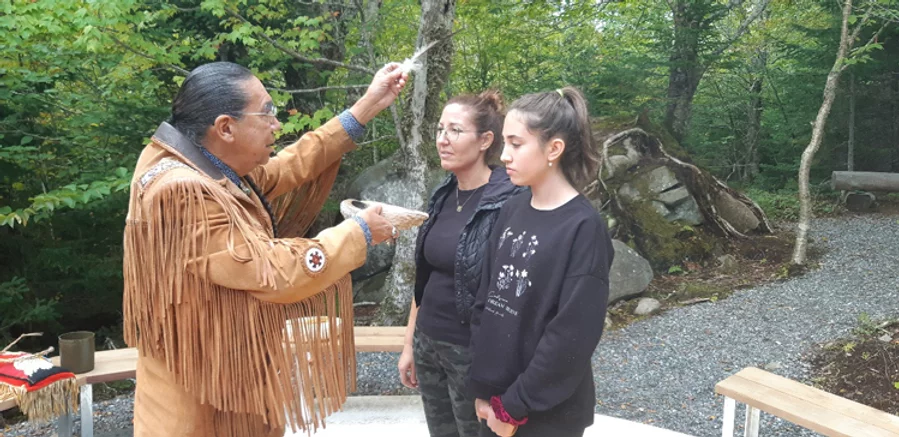Two Canadians help bring Indigenous and non-Indigenous communities together.
Canada has had a long and challenging history with its Indigenous peoples. From the late 1800s through the 1990s, more than 150,000 First Nations, Métis, and Inuit children were mandated by the government to attend residential schools. An estimated 6,000-plus children died while in this system, with many others suffered physical, psychological, and sexual abuse.
The 2015 Truth and Reconciliation Report aimed to address these issues. That same year, Peter Croal, an exploration geologist, and Patricia Stirbys, a lawyer and member of the Cowesses First Nation (Saskatchewan), participated in the Truth and Reconciliation Walk in Ottawa. The two strangers began to talk – about what reconciliation means and how to engage people. Peter floated the idea of a healing forest.
The two continued to talk and plan and then, roughly a year later, they met with Charlene Bearhead from University of Manitoba’s National Centre for Truth and Reconciliation for advice on how to create individually funded healing forests across Canada. Healing Forests’ goal is simple: to facilitate reconciliation through the healing powers of nature and outdoor spaces.
Healing Forests invites Indigenous and non-Indigenous people to create a “dedicated forest, garden, or green space as a place of healing, learning, sharing, and reflection about Canada’s history and legacy of Indian residential schools,” according to its website. We know from the Truth and Reconciliation Report that reconciliation requires honest conversations, and “there is an ease in having conversations in nature,” Patricia says. A concrete building, a table, “just doesn’t have the same feeling as if you’d gone into nature, sat outside in a circle, burned some sacred medicine — sweetgrass, tobacco, sage, cedar — and then had those very peaceful conversations in nature. It’s a totally different thing than … sitting in a boardroom building.”
One of the early healing forests was established in Perth, Ontario, and drew over 200 members of the community for Orange Shirt Day in 2021, a Canadian statutory holiday that recognizes the legacy of residential schools. There are now roughly ten official Healing Forests across Canada, some big and others small. The Noojimo’iwewin Gitigaan/Healing Garden in the bustling city of Toronto is nestled between two churches at the corner of St. Clair West and Rushton Road. Guided by an Elder-In-Residence, this small greenspace houses over 100 species of native plants, sacred medicine, and is situated between the “lost rivers” of Taddle and Garrison Creeks. “It demonstrates that you don’t need a lot of space, just a lot of heart and a desire to make a change and bring people together,” says Patricia.
The response to this project has been overwhelmingly positive. Indigenous elders have told Peter and Patricia that it is a very pragmatic and respectful way to deal with a difficult issue. As Peter notes, “When First Nations people get involved,” Peter says, “that’s a good sign we’re on the right track.”
This past year, Healing Forests partnered with the David Suzuki Foundation, a Canadian non-profit that works to conserve and protect nature, to fund the creation of forests in up to 10 communities across Canada.
While this organization began as a Canadian project, Healing Forests has been engaged in conversations around the world in countries such as the United States, Uganda, South Africa, and Australia. The founders invite everyone to take part in the Healing Forests initiative.
Interested in establishing a Healing Forest in your community? Check out the website here, or reach out to Peter and Patricia at he******************@gm***.com.


